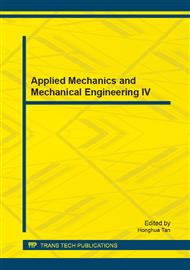p.582
p.589
p.595
p.601
p.608
p.614
p.619
p.625
p.631
Performance of Steel Pipeline with Concrete Coating (Modeled with Concrete Damage Plasticity) Underseismic Wave Passage
Abstract:
The paper presents the analysis of the dynamic response of a steel pipeline with concrete coating to a real earthquakeregistered in central Poland in 2012. The peak ground acceleration of the shock was scaled up to maximal values predicted for this seismic zone. To represent theinelastic behavior of the material of the concrete coating under dynamic loading, the concrete damaged plasticity constitutive model was assumed.The modelallows to describeplastic strains and irreversible tensile and compression damage that occurs during the cracking process.For seismic analysis two models (uniform and non-uniform) of kinematic excitation were applied. In the modelof uniform excitation it was assumed that the motion of all supports was identical. Inthe model of non-uniform excitation, typical for long structures, the wave passage along the pipelinewith different velocities (500, 400 and 300 m/s) was taken into account. It occurred that for the model of uniform excitation the concrete material of the coating remained elastic with no tensile damage. For the model of non-uniform excitation, inelastic behaviour of the coating was observed. The plastic strain areas appeared above all supports. The tensile damage (cracking) wasalso noticed in these areas: the lower wave velocity was assumed, the greater area of concrete coating was affected by plastic strains and tensile damage (cracking). It was the consequence of the quasi-static effects which resulted from ground deformations imposed on the pipeline during the seismic shock.
Info:
Periodical:
Pages:
608-613
Citation:
Online since:
October 2013
Authors:
Permissions:
Share:
Citation:


